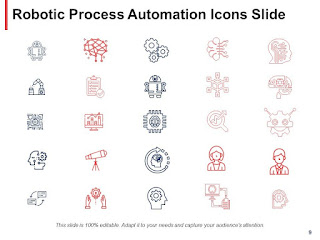Robotic process automation(RPA) or Mechanical cycle computerization is a product innovation that makes it simple to construct, convey, and oversee programming robots that imitate people activities cooperating with advanced frameworks and programming. Very much like individuals, programming robots can do things like grasp what's on a screen, complete the right keystrokes, explore situation, distinguish and remove information, and play out a large number of characterized activities. However, programming robots can do it quicker and more reliably than individuals, without the need to get up and stretch or take a short breather.
What can RPA do for us:
Mechanical or robotic Process Automation bots have the equivalent advanced range of abilities as individuals — to say the least. Consider RPA bots a Digital Workforce that can collaborate with any framework or application. For instance, bots can duplicate glue, scratch web information, make estimations, open and move documents, parse messages, sign into programs, associate with APIs, and concentrate unstructured information. What's more, since bots can adjust to any connect or work process, there's compelling reason need to change business frameworks, applications, or existing cycles to mechanize.
 |
| Robotic process automation slides |
RPA bots are not difficult to set up, use, and offer. Assuming that you know how to record video on your telephone, you'll have the option to arrange RPA bots. It's pretty much as instinctive as hitting record, play, and stop fastens and utilizing simplified to move documents around working. RPA bots can be planned, cloned, altered, and shared to execute business processes all through the association.
For what reason is RPA extraordinary?
RPA innovation is changing the way that the world finishes work.
Programming robots — rather than individuals — do redundant and lower-esteem work, such as signing into applications and frameworks, moving records and envelopes, removing, duplicating, and embedding information, filling in structures, and finishing routine examinations and reports. High level robots could in fact perform mental cycles, such as deciphering text, participating in visits and discussions, figuring out unstructured information, and applying progressed AI models to go with complex choices.
At the point when robots do these kinds of dreary, high-volume errands, people are liberated to zero in on the things they in all actuality do best and appreciate more: advancing, teaming up, making, and communicating with clients. Undertakings get a lift as well: higher efficiency, productivity, and strength. It's no big surprise that RPA is revamping the tale of work.
What is RPA in mechanical technology?
Robotic process automation (RPA), otherwise called programming mechanical technology, utilizes computerization advancements to copy administrative center errands of human laborers, for example, separating information, filling in structures, moving documents, and so on.
Places using Robotic process automation(RPA):
- Insurance
- banking
- health care
- Manufacturing
- life science
- Technology companies
- futuristic vehicle
- survey clean automachine
- Home assistance






0 Comments